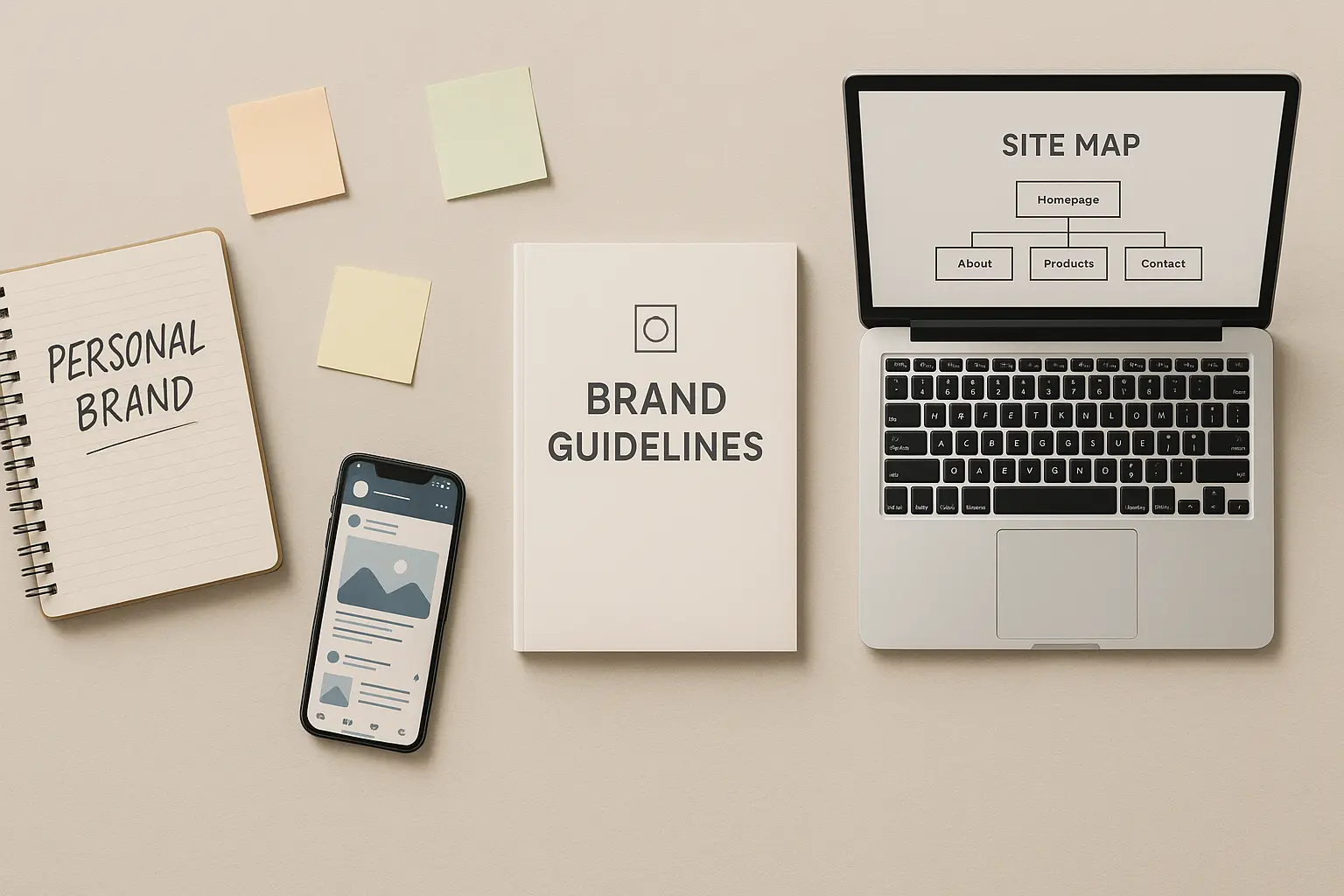From brand to platform: why more brands are building their own Shopify apps
Updated on
Published on

A few years ago, having a neat online store was enough. Nice layout, some photos, maybe a decent checkout flow, done. But times have shifted. Today, customers don’t just visit your site to buy; they expect an experience that feels made for them. Personalized, fast, connected, even a little surprising.
That’s why so many brands are moving from just running a Shopify store to actually building on top of it. They’re not stopping at “store owner.” They’re becoming product creators, and it’s paying off.
If you’re thinking about going down that road, teaming up with a Shopify app development agency can make things a lot smoother. But wait — before jumping in headfirst, think about this: what makes brands build their own apps anyway, and how does that move ripple through the way they run things?

Why even build a custom app?
Because the regular tools only take you so far.
Sure, Shopify’s ecosystem is full of ready-made plugins. They’re cheap, fast, and mostly fine. But sooner or later, you hit a wall, something you want to do that no plugin can really handle. Maybe it’s a loyalty system that actually feels personal. Maybe it’s a subscription model with weird bundles. Or maybe it’s just the frustration of juggling six different plugins that don’t talk to each other.
That’s when smart brands decide to build. A custom Shopify app gives you freedom. You can design for scale, speed, and customer experience, on your terms.
The biggest reasons brands take the plunge
1. Freedom from plugin chaos
Every app you install adds a little more weight. Another script. Another external call. Another chance for things to break during a sale.
When you’ve built the app yourself, you understand what’s going on inside. You can tidy things up, cut the lag, and make sure every bit of it connects without friction. Fewer moving parts. Fewer surprises when your store gets slammed with traffic.
2. Total control over the customer experience
Let’s be honest, most plugins feel… generic. Functional, sure, but not really you.
A custom app lets your brand’s tone, visuals, and flow carry through every tiny detail, from microcopy in a popup to how the checkout feels. That consistency builds trust. It makes your brand feel intentional, not patched together from random tools.
3. Your data, your rules
Modern brands live and die by their data. But most third-party tools keep that data locked in silos. You export CSVs, plug them into dashboards, and hope the insights make sense.
A custom app changes that. It centralizes data from Shopify, CRM, subscriptions, and fulfillment, and makes it actually useful. You can build automations that react to behavior in real time. Discounts for loyal customers, special flows for local orders, product recommendations that feel like they get you.
4. Lower long-term cost, fewer dependencies
Yes, development costs money. But so do monthly plugin subscriptions, and those add up fast.
A custom app is a one-time investment that keeps paying off. You’re not at the mercy of third-party updates or disappearing features. You own it. You control the roadmap.
5. Real competitive advantage
When your logic, personalization, and experience live in your own system, that’s not just infrastructure. It’s IP. It’s something your competitors can’t buy from an app store. Some brands even spin off their apps later, turning internal tools into new revenue streams.
What problems custom apps actually fix
Let’s cut through the buzzwords. Here’s where a custom Shopify app genuinely moves the needle.
Checkout that matches your real process
Every business has quirks, legal disclaimers, special shipping zones, complex bundling. Try adding all that into a basic Shopify checkout with off-the-shelf tools… it gets messy fast.
A custom app lets you inject your own logic without breaking flow. You can guide customers naturally through the extra steps, instead of forcing them through workarounds.
Personalized recommendations that actually make sense
Generic “people also bought” widgets are fine. But what if your product mix changes often, or your customers buy based on taste, not just category?
Custom recommendation logic can use signals like purchase frequency, style preferences, or even lifetime value. It’s the difference between “oh, that’s random” and “wow, this brand really gets me.”
Smarter subscriptions
Subscriptions are exploding, but every brand tweaks them differently. Maybe customers want to swap flavors mid-cycle, or pause delivery while traveling. A custom app can integrate inventory, billing, and logic so tightly that managing subscriptions feels effortless.
Hybrid fulfillment
Online and offline are blurring. Maybe you’ve got pop-up stores, local hubs, or same-day delivery zones. With a custom app, you can automate routing so that every order finds the most efficient fulfillment path. It’s not just operational efficiency, it’s a better promise to the customer.
Loyalty that feels like belonging
Points are boring. Experiences aren’t.
When your loyalty system lives inside your own app, you can design creative rewards: unlock early access, drop surprise bundles, or give VIPs content nobody else sees. It turns loyalty into a feeling, not a math problem.
Different ways brands approach it
There’s no one-size-fits-all model. But there are patterns that repeat.
The micro fix
Start tiny. Solve one pain point, maybe internal automation, maybe a loyalty hook. Build, test, prove the impact. Then expand. It’s how most smart brands start.
The modular approach
Think Lego, not skyscraper. Build modules for analytics, personalization, fulfillment. Each can evolve separately. When your business grows, you can mix and match.
The full platform
Some brands go big, a single system that powers multiple stores, includes dashboards, APIs, customer widgets, even white-label features. It’s ambitious but turns your brand into a full digital ecosystem.
Who actually needs a custom app?
If you’re still figuring out your product-market fit, don’t rush into development. You don’t need a spaceship when a bike works.
But if you recognize any of these, it might be time:
- You’ve outgrown your stack and spend hours fixing plugin conflicts.
- Your operations team constantly hacks around Shopify limitations.
- You’re running multiple brands or international stores.
- You’re ready to scale but stuck with manual processes.
- You need real-time, cross-platform data insights.
In short, when the pain of inefficiency costs more than the build, the decision becomes easy.
What it costs (and how to measure if it’s worth it)
Costs vary wildly. Think in phases, not a lump sum.
Phase 1: Discovery, 4 to 6 weeks. Map the problem, define scope, make a proof-of-concept.
Phase 2: Build, 8 to 20 weeks depending on integrations.
Phase 3: Iterate, monitor, optimize, and add features as data rolls in.
Measure ROI by outcomes, not vanity metrics.
Three that matter most:
- Conversion improvement.
- Operational savings (time or payroll hours saved).
- Customer lifetime value growth.
If your app saves ten hours a week of manual work, that’s measurable ROI. Don’t overcomplicate it.

How to brief your developer
Skip the buzzwords. Be specific.
Say what business outcome you want, not just “make it faster.” Describe the real pain: “our customers drop off during checkout because X.” Then list integrations, must-haves, and what success looks like.
A good agency will push back and ask hard questions. That’s a good sign. They’re protecting your time and money.
Don’t skip the boring stuff (privacy, governance, maintenance)
Boring but crucial. If your app handles customer data, you’re responsible for keeping it safe. GDPR, CCPA, all that fun stuff. Build consent, export, and deletion flows early.
Also: document everything. People leave, systems evolve, APIs change. Future-you will thank present-you for clean docs and automated tests.
Real-world examples that prove the point
Personalized restock alerts that convert
One apparel brand built a tiny app that sent restock alerts based on size and color preferences, not just “this product is back.” Those emails had one-click add-to-cart links and friendly copy. Conversions? Up by nearly a fifth.
VIP access that actually feels exclusive
A beauty brand created a loyalty app that quietly tagged top customers and gave them early access to new drops. No flashy popups, just subtle touches. Customers noticed, and retention went up fast.
Smarter local delivery
A retailer with multiple city hubs built a routing tool to assign orders dynamically to nearby warehouses. It cut delivery times and refunds. Logistics got cleaner, and customers got happier.
Mistakes to avoid
- Building too big, too soon. Start small. Learn fast.
- Ignoring testing and monitoring. Bugs in production can wreck trust.
- Not planning maintenance. Shopify evolves constantly. So must your app.
- Leaving operations out of the conversation. They’re the ones who’ll live with it.
The bigger picture
Building your own Shopify app isn’t about chasing tech trends. It’s about owning your growth engine. You stop being limited by tools designed for everyone, and start shaping your platform around how your business really works.
It’s not a quick win. It’s a long game. But for brands serious about experience and efficiency, it’s becoming the obvious move.
So maybe the real question isn’t “should we build an app?”
It’s “how long can we afford not to?”







